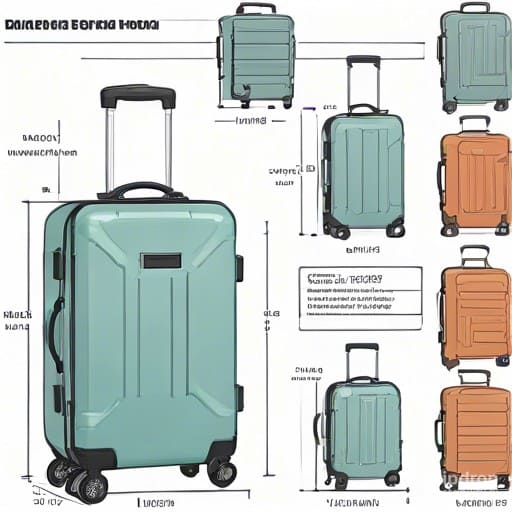Size and weight limits of baggage
.jpeg)
Carry on luggage often complements the main luggage, which is placed in the luggage compartment. It contains personal items needed for the duration of the flight or travel, and its luggage size and weight limits are often limited by airline or mode of transport regulations.
By storing important personal items in carry-on luggage, travelers can avoid loss or damage if their main luggage is lost or delayed. With essentials on hand, travelers can meet their immediate needs while flying or otherwise traveling.
An important point is to follow the recommendations and list of rules for the permissible luggage size and weight limits, that is, the total size of luggage on the plane. The carry on luggage size may vary depending on the mode of transport.
Sizes allowed for airline baggage may vary depending on the airline and the type of baggage (carry-on or check-in baggage). However, there are generally accepted standards that are often applied.
General recommendations for baggage size limits on airplanes
Hand luggage – size of cabin luggage:
Typically allowed size: 55 x 40 x 20 cm.
Some airlines may also specify weight restrictions for carry-on luggage.
Check-in baggage size:
Commonly used dimensions for medium and long flights: 158 cm (sum of height, width and depth).
Check-in baggage sizes may vary significantly depending on the airline.
It is important to note that these sizes are not universal and each airline may have its own rules and restrictions. Passengers are advised to check their airline's specific requirements before departure to avoid additional charges or inconvenience.
Check-in baggage sizes may vary by airline and class of service. The generally accepted standard for check-in luggage size on medium and long flights is usually limited to the sum of height, width and depth (linear dimensions).
Average permitted baggage size for check-in
Standard limits are often around 158 cm (62 in) in total (height + width + depth)
As an example, it could be 76 cm x 45 cm x 36 cm.
Typically, allowable size of luggage are expressed in units of length x width x height and may be expressed in centimeters or inches. It is important to check the specific policies of the airline or mode of transport you are traveling with as they may vary.
Average allowed sizes limits of luggage
Length: About 55 cm (about 22 in)
Width: About 40 cm (about 16 in)
Height: About 20 cm (about 8 in)
 These sizes limits are indicative and may vary, so it is always recommended to check the specific rules of the carrier you are traveling with. Also, some airlines may have specific rules for certain classes of travel or for certain routes, so it's important to be informed before you go.
These sizes limits are indicative and may vary, so it is always recommended to check the specific rules of the carrier you are traveling with. Also, some airlines may have specific rules for certain classes of travel or for certain routes, so it's important to be informed before you go.
The weight limits of baggage allowed on an airplane may vary depending on the airline, class of service and type of ticket. Typically, airlines set limits on the maximum weight limits of check-in baggage (carried in the hold) and the maximum weight of carry on luggage size(carried in the cabinbaggage ).
General baggage weight limits standards
Suitcase weight Hand luggage
The weight limits of hand luggage is usually limited from 5 kg to 10 kg.
Some airlines may also place a limit on the sum of three dimensions (length + width + height).
Suitcase weight check-in luggage
Baggage weight limitscan vary from 20 kg to 32 kg depending on the airline and class of service.
In economy class there is often a limit of 23 kg or 25 kg.
It's important to check your airline's specific policies, as they may have their own unique restrictions. This information is usually found on airline websites or on the ticket.
Carry-on baggage simplifies the screening process as certain items must be accessible and checked separately. Travelers should keep valuables such as jewelry, expensive electronics, or important documents in their carry-on luggage to protect them from loss or theft.
However, for exact information on check-in baggage or carry-on baggage sizes, it's best to refer to the policies of the specific airline you're flying with, as different airlines may have their own unique restrictions. These restrictions are usually listed on the airline websites or on the ticket.



